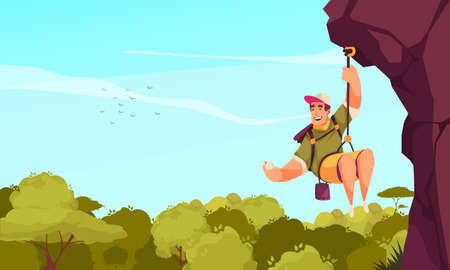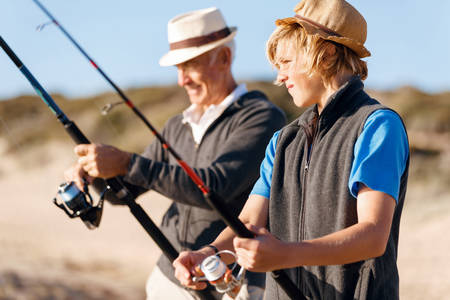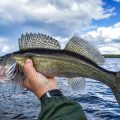1. Understanding the Basics of Juglining, Trotlining, and Yo-Yo Fishing
When it comes to catching catfish across the United States, especially in the South and Midwest, three time-tested methods stand out: juglining, trotlining, and yo-yo fishing. These techniques have deep roots in Southern fishing traditions and are still widely used today by recreational anglers for their effectiveness and simplicity. Let’s break down what each method involves, how they differ from one another, and why they continue to be go-to strategies for targeting catfish.
Juglining
Juglining is a passive fishing method that uses floating devices—usually plastic jugs or foam floats—to suspend baited hooks in the water. Anglers set these jugs adrift in lakes or slow-moving rivers and return later to check for bites. It’s a great way to cover a wide area without needing to hold a rod all day.
Typical Gear Used:
- Plastic jugs or foam floats
- Heavy-duty fishing line (usually 50-100 lb test)
- Circle or treble hooks
- Sinkers (optional based on water conditions)
- Live or cut bait (such as shad, bluegill, or chicken liver)
Trotlining
Trotlines are long mainlines with multiple baited hooks attached via short drop lines called snoods. The line is anchored at both ends and can stretch across creeks, rivers, or lake coves. This method allows you to fish many baits at once and is ideal for targeting bottom-feeding catfish.
Typical Gear Used:
- Mainline rope or heavy-duty fishing line (100+ ft)
- Snood lines with hooks spaced every few feet
- Anchors or weights on both ends of the line
- Floats or markers for visibility
- Bait similar to juglines
Yo-Yo Fishing
A yo-yo reel is a spring-loaded device that automatically sets the hook when a fish bites. These reels are hung from tree limbs, docks, or other structures above water. Theyre particularly popular for overnight catfishing trips because they do the work while you rest.
Typical Gear Used:
- Mechanical yo-yo reels with built-in tension springs
- Nylon leader lines with hooks
- Live bait such as minnows or worms
- Trees, branches, or poles for suspension
Comparison Table of Methods
| Method | Main Advantage | No. of Hooks | Best Water Type | Effort Level |
|---|---|---|---|---|
| Juglining | Covers large areas easily | 1 per jug | Lakes, slow rivers | Low to medium |
| Trotlining | Catches multiple fish at once | 10–50+ | Larger rivers, lakes | Medium to high (setup required) |
| Yo-Yo Fishing | Hands-free automatic hookup | 1 per yo-yo device | Ponds, creeks, backwaters near trees/docks | Low once set up |
The Roots of Tradition in Southern Waters
These fishing styles aren’t just practical—they’re part of cultural heritage in states like Mississippi, Arkansas, Alabama, Missouri, and Texas. Families have passed these techniques down through generations as part of weekend trips to the lake or riverbank. Whether youre using milk jugs tied with nylon twine or an old-school trotline stretching across a backwater bayou, these methods connect todays anglers with centuries-old practices that remain effective even with all the modern gear available.
A Note on Legality Across States:
Laws vary by state when it comes to juglines, trotlines, and yo-yos. Some states limit the number of hooks allowed per person; others require tags on your lines or restrict where you can set them. Always check local regulations before heading out—what’s legal in Louisiana might not fly in Kansas.
If youre looking for a more relaxed way to haul in channel cats, blues, or even flatheads without casting all day long, understanding these traditional methods is a great place to start your catfishing journey.
2. Legal Considerations and State-by-State Regulations
When it comes to juglining, trotlining, and yo-yo fishing for catfish, the rules can vary a lot depending on where you are in the U.S. What’s perfectly legal in one state might get you a fine—or worse—in another. Knowing the laws not only helps you avoid trouble but also supports conservation efforts and keeps fishing fun for everyone.
Licensing Requirements
In most states, youll need a valid fishing license to use any of these methods. Some states also require additional permits or endorsements for gear like trotlines or yo-yos. Always check with your local wildlife agency before heading out.
Example Licensing Overview:
| State | License Required | Special Permit Needed |
|---|---|---|
| Texas | Yes | No (but must follow gear regulations) |
| Missouri | Yes | Yes (for more than 33 hooks) |
| Louisiana | Yes | No (basic license covers most methods) |
| Arkansas | Yes | Yes (if using commercial gear) |
Gear Limits and Hook Restrictions
The number of lines, hooks per line, and even hook size may be regulated. For instance, some states cap trotlines at 50 hooks, while others allow more if tagged properly. Others restrict how close lines can be placed to public boat ramps or swimming areas.
Quick Gear Limit Guide:
| State | Max Hooks Per Trotline | Jugline Limit | Yo-Yo Rules |
|---|---|---|---|
| Oklahoma | 100 (must be tagged) | 5 per angler | No mechanical timers allowed on public waters |
| Tennessee | 50 per line | No specific limit, but must be attended daily | Labeled with angler info required |
| Kansas | 25 per line (must be checked every 24 hrs) | No more than 8 in use at once | Banned in some public lakes |
| Alabama | 100 total per person across all lines | No limit but tagging required on public waters | Legal but subject to local lake rules |
Tagging Rules and Identification Requirements
A lot of states require that your trotlines, juglines, or yo-yos have identification tags showing your name, address, or license number. This helps wildlife officers know who’s responsible for each rig and ensures accountability.
Pro Tip:
If youre fishing multiple states during a trip, bring pre-made waterproof ID tags so you can stay compliant wherever you go.
Private vs. Public Waters Differences
The law is generally more relaxed on private ponds and lakes where you have landowner permission. However, once youre on public water—like rivers, lakes, and reservoirs—you’ll need to follow all state laws strictly. Some states even ban certain methods entirely from specific bodies of water.
Private vs. Public Waters Comparison:
| Private Waters (with permission) | Public Waters (state-owned) | |
|---|---|---|
| Trotlines Allowed? | Usually Yes (no limit) | Yes (regulated by number & tag) |
| Juglines Allowed? | Yes (often unlimited) | Yes (daily limits apply) |
| ID Tags Required? | No (unless state law says otherwise) | Yes in most states |
Tips to Stay Compliant with Local Wildlife Agencies
- Always read your states current fishing regulations before each trip—rules change often.
- If youre unsure about something, call your local Department of Natural Resources or Fish & Wildlife office.
- Certain regions may have seasonal closures or gear-specific restrictions—know them ahead of time.
- Avoid placing your lines near boat ramps, marked swim areas, or navigation channels.
Navigating the maze of fishing regulations doesnt have to be intimidating. With a bit of preparation and respect for the rules, you can enjoy juglining, trotlining, and yo-yo fishing responsibly across America.

3. Essential Gear and Setup Tips
When it comes to juglining, trotlining, and yo-yo fishing for catfish, having the right gear makes all the difference. Each method has its own unique setup, but many of the materials overlap. Below is a detailed breakdown of what you’ll need to get started, including both DIY and store-bought options.
Juglining Gear
Juglines are floating rigs that drift or anchor in water with baited hooks attached. They’re great for covering large areas and work especially well in lakes and slow-moving rivers.
Basic Materials:
| Item | Description | DIY Option |
|---|---|---|
| Jugs/Floats | Plastic milk jugs, 2-liter bottles, pool noodles with PVC inserts | Yes – Recycle old bottles or cut pool noodles |
| Mainline | Nylon cord or heavy-duty fishing line (100+ lb test) | Yes – Use paracord or braided rope |
| Hooks | Circular hooks (size 5/0 to 8/0) | No – Best to use quality store-bought hooks |
| Weights/Sinkers | 2-6 oz egg sinkers or bank sinkers depending on current | Yes – Homemade from lead molds if experienced |
| Bait | Cut bait (shad, bluegill), chicken liver, hot dogs soaked in garlic | Yes – Easily sourced locally or made at home |
| ID Tags (if required) | Name/address or license number on each jug (check local laws) | Yes – Use waterproof labels or permanent marker |
Trotlining Gear
Trotlines are long horizontal lines with multiple drop lines spaced out along their length. Theyre ideal for covering wide areas and targeting multiple catfish at once.
Basic Materials:
| Item | Description | DIY Option |
|---|---|---|
| Mainline (Backbone) | Braided nylon line (100–300 ft, 100+ lb test) | Yes – Braided rope or commercial trotline spools work well |
| Drops/Leaders (Snoods) | 12–24″ monofilament or braided lines tied every few feet with swivels/hooks | Yes – Tie your own using barrel swivels and leaders |
| Hooks | Circular hooks (size 5/0 to 8/0) | No – Stick to high-quality hooks for safety and effectiveness |
| Weights/Anchors | Cinder blocks, homemade weights, or store-bought anchor systems for each end of the line | Yes – Bricks with wire loops or coffee cans filled with concrete work great |
| Bait | Shrimp, cut bait, nightcrawlers, soap baits in warmer waters | Yes – Many options can be prepared at home or caught locally |
| Floats/Buoys (Optional) | PVC pipe floats or plastic bottles to mark ends of line above water level | Yes – Recycled bottles or DIY foam floats work well |
| ID Tags (if required) | Name/address or license number attached to one or both ends of line (check state laws) | Yes – Waterproof labels are easy to make at home |
Yo-Yo Fishing Gear
A yo-yo fishing rig is an automatic reel that sets the hook when a fish bites. These devices are especially useful when bank fishing or setting up along docks and trees.
Basic Materials:
| Item | Description | DIY Option |
|---|---|---|
| Yo-Yo Reels (Auto Fisher Reels) | Spring-loaded reels designed for automatic hook setting when fish strikes; typically hung from tree limbs or structures over water. | No – Must purchase commercially; brands like Mechanical Fisher are popular in the U.S. |
| Mainline & Leader Line | The reel includes built-in line; leader can be monofilament added via swivel connection. | |
| No – Comes pre-rigged but can be modified if needed. |
Bait & Hooks:
- Circular hooks (size 4/0 to 6/0) work best for yo-yos to prevent gut hooking.
- Bait options include worms, minnows, chicken liver, and prepared dough baits.
- You can also use small chunks of cut bait like shad or bluegill.
Tips for All Setups:
- Always check your state’s regulations on gear limits, tagging requirements, and legal bait types before heading out.
- If youre just starting out, try a few commercial setups first before going full DIY. This helps you learn what works best in your local waters.
- Circular hooks are recommended because they reduce deep hooking and increase survival rates if you plan to release smaller catfish.
- A simple tackle box with extra swivels, line cutters, pliers, and bait containers is helpful no matter which method youre using.
- If youre making DIY jugs or trotlines, consider color-coding them for better visibility on the water—bright orange or yellow paint works great.
- A headlamp and gloves are must-haves for setting lines at night safely and efficiently.
The key to success with juglines, trotlines, and yo-yos lies not just in where you place them—but how well you prepare your gear. With the right setup tailored to your local conditions and target size of catfish, youll boost your chances of hauling in a cooler full of whisker fish every trip out.
4. Best Practices for Catching Catfish with Passive Gear
Using passive fishing gear like juglines, trotlines, and yo-yos can be a highly effective way to catch catfish, but success depends on more than just tossing your gear in the water. Here are some best practices to help you increase your catch rate while staying safe and minimizing harm to the fish and environment.
Choosing the Right Location
Finding the right spot is key. Catfish tend to hang out in deeper holes during the day and move into shallower waters to feed at night. Look for these features when scouting locations:
- River bends: These areas often have deeper water where catfish like to rest.
- Log jams or submerged structures: Provide cover and attract baitfish—catfish follow.
- Mouths of creeks or tributaries: Good spots where current carries food downstream.
- Docks and piers: Especially at night when catfish come in closer to shore.
Bait Choices That Work
The right bait can make all the difference. Heres a quick comparison of popular options:
| Bait Type | Best For | Pros | Cons |
|---|---|---|---|
| Cut Bait (Shad, Bluegill) | Blue and channel catfish | Strong scent, widely available | Can spoil quickly in heat |
| Chicken Liver | Channel catfish | Cheap, easy to find | Easily falls off hook if not secured well |
| Dough Baits / Stink Baits | Channel catfish | Pungent smell attracts from distance | Less effective for larger blues or flatheads |
| Live Bait (Perch, Goldfish) | Flathead catfish | Mimics natural prey, lasts longer in water | Might be restricted in some states—check local laws |
The Right Time of Day Matters
Catfish are most active during low-light periods. While you can catch them anytime, these windows usually produce better results:
- Dusk and dawn: Prime feeding times as light levels shift.
- Nights: Especially hot summer nights—catfish move into shallow flats to hunt.
- Overcast days: They may stay active longer due to reduced sunlight penetration.
Adapting to Seasonal Changes
The time of year plays a big role in how and where you set your lines. Heres a seasonal breakdown:
| Season | Tactics & Considerations |
|---|---|
| Spring | Catfish move into shallows to spawn; target warmer coves and creek mouths. |
| Summer | Bite slows during midday heat; focus on early mornings, evenings, or overnight sets. |
| Fall | Cats feed heavily before winter; great time for larger catches near drop-offs. |
| Winter | Bite slows overall; deep holes and slower presentations work best. |
Safety Tips When Using Unattended Gear
- Mark all gear clearly: Use reflective tape or labeled floats so boaters can see them easily.
- Avoid high-traffic areas: Set lines away from main channels or boat lanes.
- Tie off securely: Whether it’s a tree branch or an anchor point, make sure your gear won’t drift away or cause hazards.
- Check local weather: Sudden storms can create dangerous conditions on the water.
Minimizing Fish Mortality with Passive Gear
- Check lines frequently: Don’t leave gear unattended for more than a few hours if possible. This reduces stress and injury to hooked fish.
- Avoid deep hooking: Use circle hooks—theyre less likely to gut-hook fish and improve survival rates if released.
- Select appropriate line strength: Prevents break-offs that leave hooks embedded in fish.
- If releasing fish: Handle gently, keep them wet, and release quickly back into the water.
This hands-off style of fishing can be incredibly productive when done responsibly. By paying attention to location, bait, timing, and safety—while also caring about the fishery—you’ll set yourself up for consistent success with juglines, trotlines, or yo-yo rigs.
5. Conservation, Ethics, and Responsible Fishing
Juglining, trotlining, and yo-yo fishing are time-tested methods for catching catfish, especially in Southern and Midwestern waters. While these passive fishing techniques can be productive and fun, it’s important to balance success with conservation and ethical practices. Here’s how you can fish responsibly while keeping our waterways healthy for future generations.
Respecting Waterway Ecosystems
Every river, lake, and reservoir has its own unique ecosystem. Overfishing or careless gear use can disrupt that balance. Be aware of local species, spawning seasons, and habitat areas when setting your lines. Avoid placing gear near submerged vegetation or nesting areas where fish may be spawning. Healthy ecosystems mean more fish in the long run.
Sustainable Catfishing Practices
Fishing sustainably means only taking what you need and allowing the population to replenish. Always follow local bag limits and size regulations. If you catch more than you plan to eat or use, consider releasing some back into the water.
Recommended Sustainable Habits
| Practice | Why It Matters |
|---|---|
| Use circle hooks | Reduces deep hooking and increases survival rates of released fish |
| Set fewer lines with better placement | Avoids unnecessary bycatch and protects smaller fish |
| Check lines frequently (at least every 4-6 hours) | Prevents fish from dying on the hook or being eaten by predators |
| Harvest only legal-size fish | Allows younger fish to grow and reproduce |
Preventing Gear Loss
Losing fishing gear isn’t just a waste of money—it also litters waterways and poses hazards to wildlife. Always secure your jugs, yo-yos, or trotlines properly so they don’t float away or sink unnoticed.
Tips to Reduce Gear Loss:
- Label all gear with your name and contact info if required by law.
- Use brightly colored floats for visibility.
- Tie lines securely to strong anchors or trees.
- Avoid leaving gear out during storms or high winds.
- Remove all gear when youre done fishing.
Ethical Fish Handling
If youre planning to release a catfish, handle it gently to give it the best chance at survival. Wet your hands before touching the fish, avoid squeezing its body, and remove hooks carefully. If the hook is too deep, it’s often safer to cut the line as close as possible rather than trying to yank it out.
Basic Catch-and-Release Tips:
- Avoid dragging fish across rough surfaces like rocks or boat decks.
- Support the body with both hands—one under the belly and one near the tail.
- Keep air exposure under 30 seconds whenever possible.
- If using a net, choose one with rubberized mesh to prevent damage to fins and skin.
The Role of Passive Fishing in Conservation
You might not think of juglines or trotlines as tools for conservation—but they can be if used properly. Passive methods reduce active disturbance in the water compared to constant casting or boating. They also allow selective targeting of catfish without stressing other species unnecessarily. By combining passive gear with smart practices, anglers help maintain balanced populations while still enjoying great fishing days on the water.
Responsible juglining, trotlining, and yo-yo fishing isnt just about following laws—its about preserving our natural resources for kids, grandkids, and fellow anglers across America. When we treat our waters right, they’ll keep rewarding us with big catfish for years to come.


